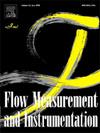To improve the internal ballistic performance of compressed-air ejection devices and achieve continuous launching, it is essential to investigate the dynamic characteristics and transient flow field during the opening and closing of the high-pressure pneumatic pilot-driven on/off valve (HPPV) within the device. A transient fluid-simulation model of the HPPV is established in Fluent using a sliding mesh and 6 Degree of Freedom (DOF) dynamic mesh technology, and experiments are conducted to evaluate the solution accuracy of the model. Meanwhile, the influence of real-gas thermal and wall heat-transfer effects on the simulation model are investigated, and the transient flow field of the HPPV is analyzed during its opening and closing under a high-pressure initial gas source. The maximum tolerance between the results of the HPPV transient fluid-simulation model based on the CFD method and experimental data is 5.87 % under different initial pressures. Both the wall heat transfer and real gas thermal effects impact the accuracy of the transient fluid model for HPPV. Considering these factors leads to a 2–3% enhancement in the solving accuracy of the model. The Joule–Thomson effect inside the pilot-valve and control gas chambers is evident. The pilot-valve chamber is susceptible to leakage and sealing failure owing to significant pressure and temperature differences between the two sides of the gas. The temperatures of the chamber for the opening and closing valves are low during the exhaust process, which enables ice to be formed easily inside the chamber.


